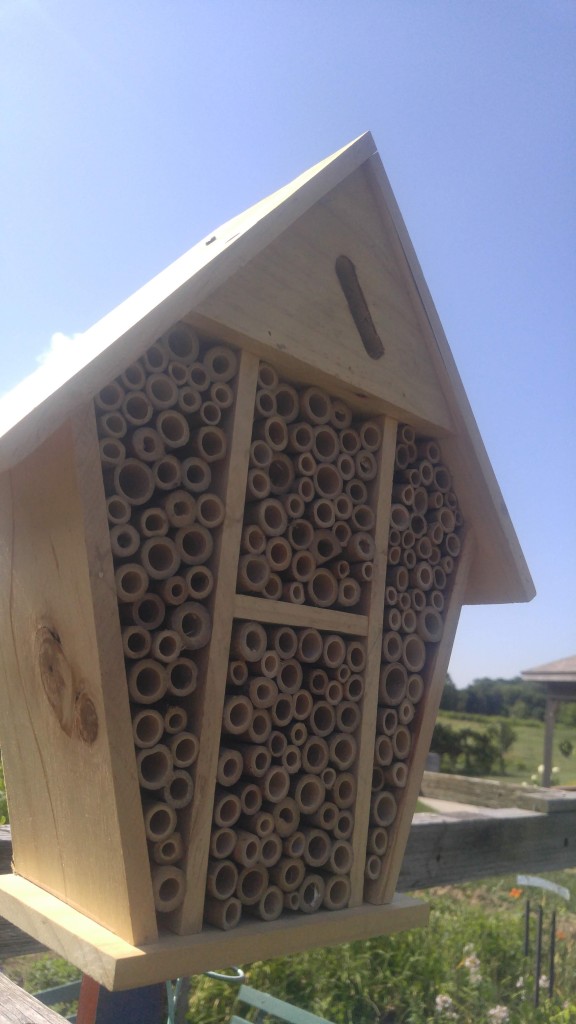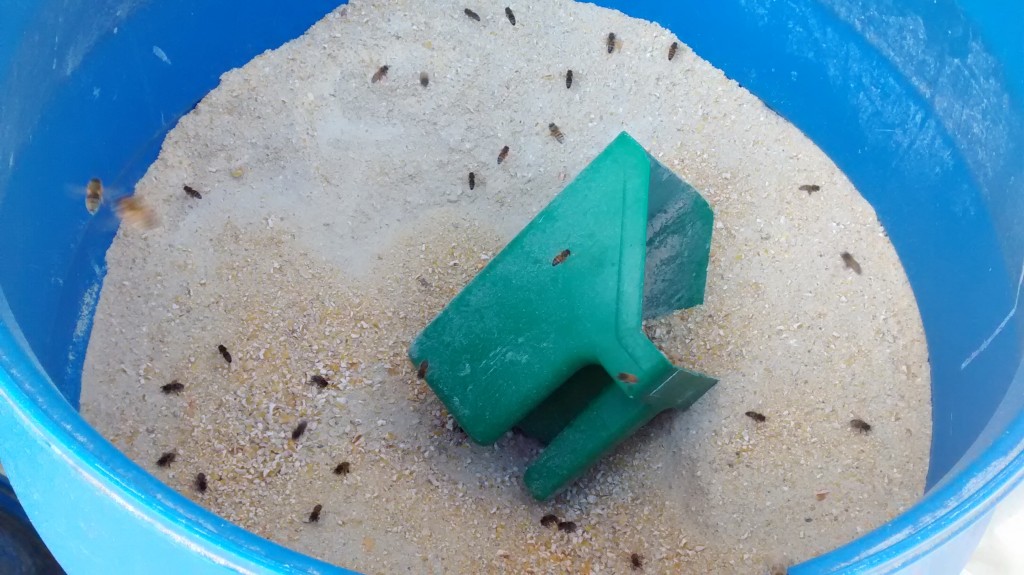By now, most people are aware of the declining honeybee population. What is not as well know is wild bees are having the same problems.
Wild bees are important because in many instances they are more efficient at pollinating some crops than are honeybees. They are also highly adapted to pollinating wild flowering plants making them an essential part of our ecosystem.
Some commercial beekeepers make a large part of their income by renting hives of honeybees to farmers who grow valuable food crops. Almonds are one example of a crop that requires honeybees to pollinate large plantations of trees. There are now a new breed of beekeepers who are commercially raising wild species such as alfalfa leaf cutter bees and renting them out to farmers. I guess in that case they’re not wild anymore.
So what can we do to help out out little flying friends? We can plant pollinator friendly plants in the garden. We can be be aware not to spray our fruit trees when wild plants like dandelion or dutch clover are blossoming in the orchard. But not everyone has fruit trees or even has space for a garden. Not everyone has the inclination or desire to become a keeper of honeybees either. Or if they did, they may not have the time or resources to spend on a hive of bees
You can however become a beekeeper of sorts with very little effort. Instead of keeping honeybees, you can provide a home for wild bees. Most species of wild bees are solitary. They do not congregate together to form colonies like honeybees. They never will see their parents or siblings unlike honeybees who are surrounded by thousands of family member all pitching in to raise them.
When an adult female solitary bee looks for a place to lay her eggs, she doesn’t look for a hive. Instead she looks for a sheltered spot where the egg will be safe while it is incubating on its own. This is most often a crack or fissure in a tree or even better, an opening made by some other animal such a a hole left behind from a tree boring insect.

You can purchase pre-built bee houses like the one shown here. Or make your own, bees are not choosy.
Small bee houses for these solitary bees are available to those who would like to help out our wild bees. These bee shelters come in an almost endless variety but they all have one design feature in common, holes that mimic natural cavities for female bees to lay their eggs. Some designs are not much more than simple blocks of wood with many holes drilled into them. Others use stacked up hollow stems of bamboo to form the shelters. Sometimes a roof is attached to keep the rain out.
You can make your own or buy these bee houses at garden centers or online. Either way it is an easy way to become a beekeeper or at least a bee helper. Unfortunately, solitary bees don’t make honey, they have no reason to. On the other hand they don’t sting.
Bob

